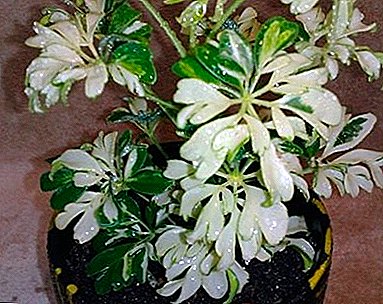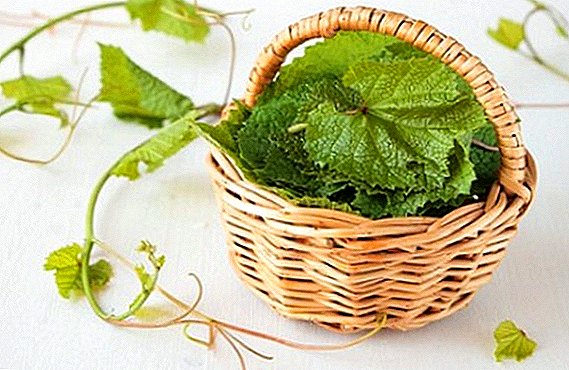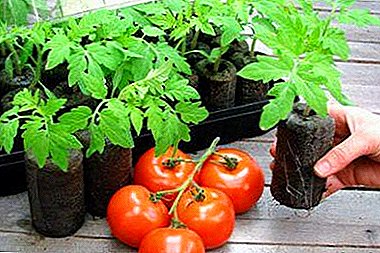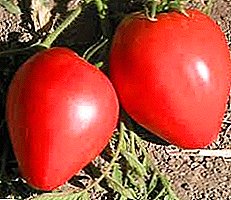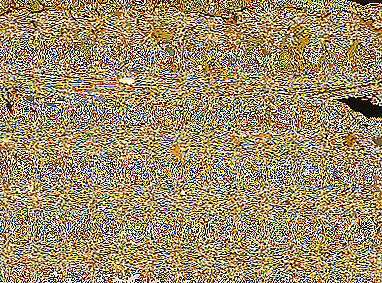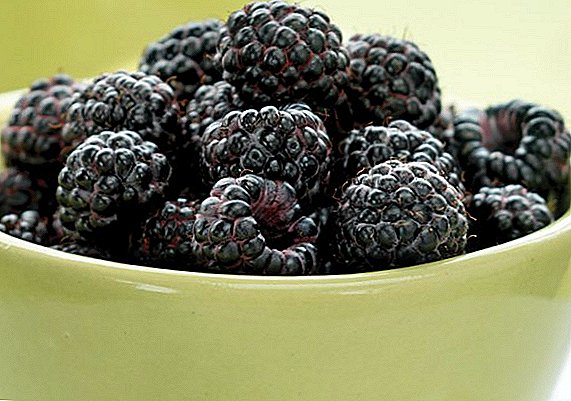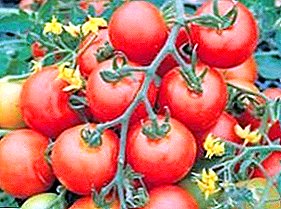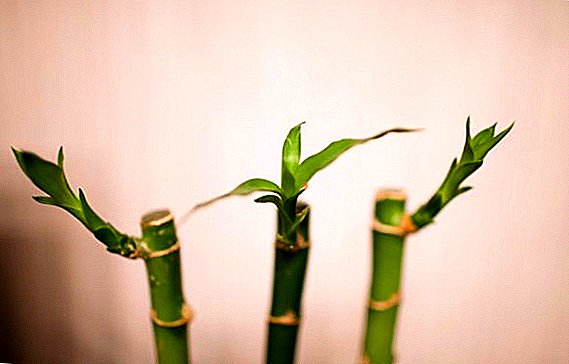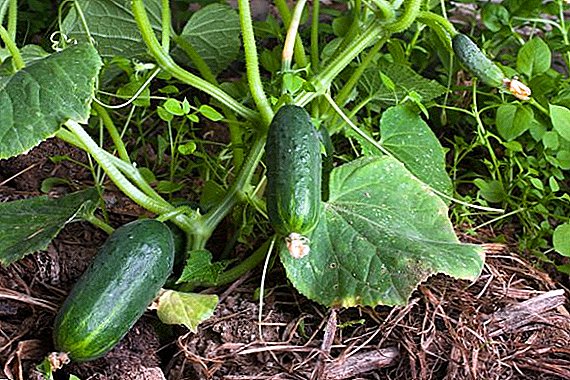 The cultivation of any vegetable begins with its planting, so it is important to know about all the intricacies of this process. Knowing when and how to plant tomatoes or cucumbers on seedlings, you can safely count on a generous harvest in the fall. Let's look at this issue more closely.
The cultivation of any vegetable begins with its planting, so it is important to know about all the intricacies of this process. Knowing when and how to plant tomatoes or cucumbers on seedlings, you can safely count on a generous harvest in the fall. Let's look at this issue more closely.
What you need to grow
In addition to the seeds of cucumbers, you will also need other components for planting: capacity, the correct composition of the soil and suitable climatic conditions. But first things first. 
Substrate for cucumbers
If you want your seedlings to bring a rich harvest, you should immediately think about the ground in which you plant them. The most suitable substrate for seeds will be a mixture of humus, mullein and sod land in a ratio of 7: 1: 2. You can also use a soil mix consisting of mullein and peat (1: 4), adding 30 g of urea or ammonium nitrate, lime (30 g), potassium salt (6 g) and superphosphate (20 g) to a bucket of this composition.
Check out the most common cucumber varieties: "Masha f1", "Competitor", "Zozulya", "German" and "Courage".Considering that cucumbers are very "harmful" and "capricious" plants, poorly tolerated transplant in open ground (often get sick and poorly take root in a new place), then their seedlings have to be grown without picking. Therefore, individual plastic cups that remain from yoghurts or sour cream are most suitable for the role of seed tanks, as long as their volume is not less than 400 ml, at a height of 12 cm. It is highly undesirable to use smaller containers, since the root system of the seedlings cannot normally develop and it will slow down its growth. As an alternative, you can use special peat tablets or egg shells.
Climatic conditions
Not the last role in the cultivation of cucumbers and temperature indicators play. Immediately after planting in the pots, the temperature in the room for germination should be + 20 ... + 25 ° C, but then it can be slightly reduced to + 20 ... + 22 ° C during the day and + 15 ... + 16 ° C at night. .
Important! The soil should warm up evenly to + 15 ° C so that the seedlings do not freeze at night.
The best time to grow
Experienced gardeners in the issue of growing different crops listen not only to the advice of manufacturers, but also to popular beliefs and even recommendations of astrologers, because if you do everything correctly, you will be provided with a good result. Let's proceed from this logic, and we will try to determine the best time to grow cucumbers. 
As recommended by the manufacturer
Given the climatic location of our country, most seed growers are advised to plant cucumbers at a site closer to the middle of April, and sometimes even at the beginning of May (based on this, it is possible to determine the seedling sowing time). In this regard, much depends on how quickly the warm weather sets in your area and the soil warms up. The ideal option would be the presence of a greenhouse with done warm beds.
If all these conditions are met, and you live in the southern regions, then you can try to move the seedlings to open ground in March.
Important! For a more accurate determination of the specific time of planting seeds in cups, you need to know that seedlings are transplanted to the flower bed about three weeks after sowing.All carefully calculated and knowing the weather in advance, you can easily calculate the favorable time to start growing cucumbers.

By lunar calendar
Quite an interesting option is the orientation to the recommendations of the lunar calendar, which each year may differ significantly. According to the forecast for 2017, a conditionally favorable time when it is possible to plant cucumbers for seedlings is considered to be March 4 and 5 (the most favorable numbers are 1, 6, 7 and 29-31 this month), and also April 1 and 2 (but it’s better to organize 9, 10, 27 and 28 numbers). With a later sowing, it is worthwhile to focus on May 26-27 (2-3 numbers are conventionally favorable this month). For June, the most suitable time to solve the problem will be the 8th and 9th numbers, although in the extreme case, you can carry out the procedure 3-4.
It is also interesting that many gardeners "consult" with the lunar calendar not only in the matter of planting cucumbers, but also in the further care of them. For example, despite the fact that these plants need regular watering (in the period of active fruiting, the introduction of liquid into the soil should be done once every three days), this procedure should be very careful, especially when the Moon is influenced by Gemini and Libra. In 2017, this time falls on 4-5 and 13-14 March, 1 and 9-11 April, 7-8 and 16-17 May, 3-5 and 29-30 June, 1, 10-11 and 29-30 July, 16th and 25-26 August. At the same time, fertilizing is best done on the following days: in March - 4-5, 9 and 13-16, in April - 12-13 and 22-23, in May - 19-23, in June - 8-9, in July - 20-21 and 24, and in August - 3-4 and 9-12 numbers.
Did you know? In Russia, fruits with tubercles are considered to be real cucumbers, but Europeans, by contrast, respect smooth specimens more, calling the first version “cucumbers in a Russian shirt”.

The importance of choosing the right one
Having figured out when to sow cucumbers, it's time to move on to the question of how to choose the most appropriate seeds for planting in your area. The fact is that all the varieties of this plant are divided into pollinated by bees and parthenocarpic, which is important to consider when buying seeds. The last option for tying does not need pollination by insects, which allows them to grow in small greenhouses.
Familiarize yourself with all the subtleties of growing cucumbers in buckets.For cultivation in open soil, you can buy varieties of both groups and their hybrids (denoted as F1), but some nuances should be taken into account. For example, bee-pollinated cucumbers tolerate low air humidity and are resistant to the effects of sun and wind. At the same time, parthenocarpic varieties rarely bitter and do not form seeds.
Excellent varieties of cucumbers for open ground are deservedly considered varieties "Vyaznikovsky 37", "Altai Early 166", "Graceful and Murom 36". More greenhouse are varieties "Manul", "Friendly", "Magnificent", "April" and "MOVIR-1". 
Among the new varieties is to provide hybrids:
- "Baba Masha" - Partially parthenocarpic, bee-pollinated variety with a yield of up to 13 kg per 1 m², which is excellent for blanks and has a high resistance to various diseases.
- "No hassle" - as in the previous version, you can harvest up to 13 kg of crop from just 1 m² of plantings, starting its harvesting in early summer and ending in the middle of autumn. Great for cooking marinades and pickles.
- "The Magnificent Five" - refers to the early parthenocarpic hybrids, whose yield is often 15 kg per 1 m². Fruits are well stored both fresh and in the form of canned food.
Did you know? More than 95% of cucumber is water.Such hybrid varieties are well suited for planting in open ground or in greenhouses such as:
- "Baby" - ultraearly, bee-pollinating variety, the fruits of which ripen together as early as 40 days after the first shoots. They are not bitter and are excellent for both salads and preservation.
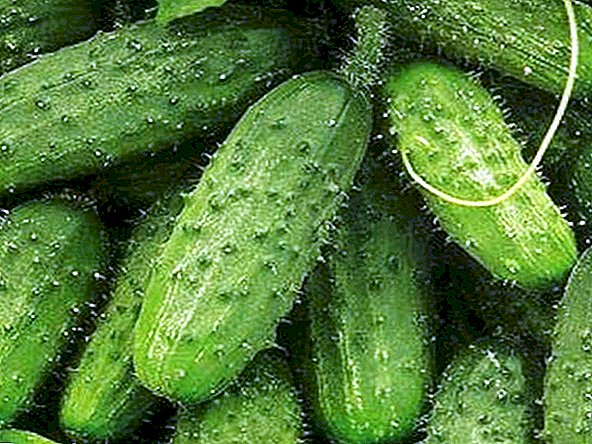
- "Twins" - the early ripe grade differing in rather high rates of productivity (from 1 m ² to 13 kg of fruits). This bee-pollinating hybrid tolerates temperature drops and is highly resistant to diseases. Fruits are laid beams, not bitter and can be used for any culinary needs.
- "Khrum-Khrum" - Another early hybrid bee-pollinating, ideal for creating a wide variety of blanks. It tolerates droughts, high temperatures, but for good yields it needs regular watering.
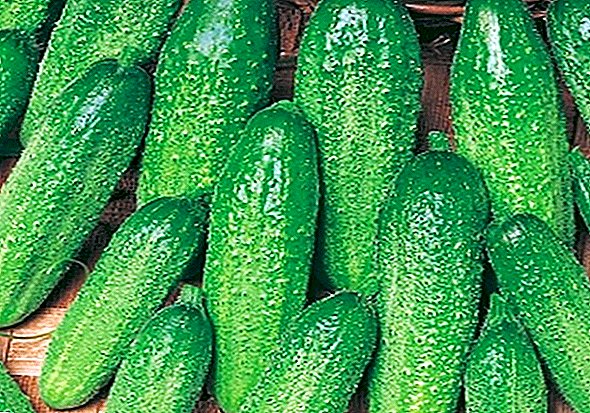
- "Apetitny" - high-yielding hybrid of universal purpose, referring to the bee-pollinating variants with medium early ripening. He feels well both in open ground and in the soil under temporary cover from the film.
- "Baby" - early ripe, bee-pollinating hybrid variety, at the same time outstanding crop of cucumbers (fruits reach 7-10 cm in length). They do not turn yellow, do not outgrow and can be used for any culinary purposes. Due to its high disease resistance, “Baby” can be grown not only in the garden (in open soil), but also in greenhouses, and with not very favorable conditions.
- "Antoshka" - Parthenocarpic hybrid of medium early ripening. Suitable for cultivation in open, but protected soil, where there is a friendly formation of a universal crop. Like the previous hybrid, “Antoshka” tolerates sharp temperature drops in day and night temperatures, and also grows quietly with a lack of light.
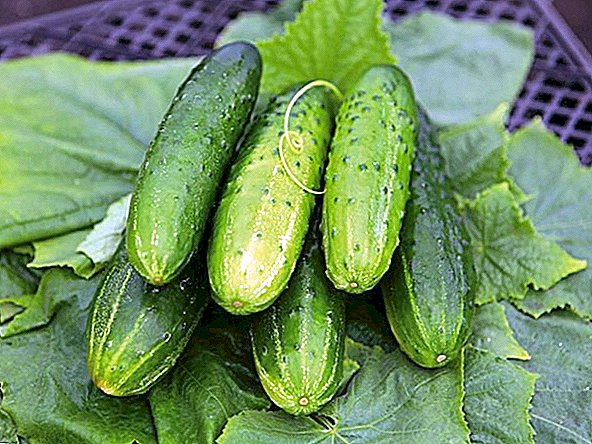
- "Preschool children" - parthenocarpic hybrid of cucumbers, characterized by an average ripening period and relatively long fruiting. Fruits do not outgrow or turn yellow, they cope well with diseases and are ideal for long-term transportation. Fresh, fruits can be stored up to 10 days, but they can also be used for conservation.
Important! For those who are accustomed to returning to their plantings only on weekends, non-woven covering material is better, which does not interfere with the normal circulation of air.
Care Tips
Growing cucumber seedlings, even knowing when to plant them properly, you can not do without information about the features of caring for these capricious plants. First of all, you need to know that they need frequent watering (but do not overdo it, otherwise there is a high probability of the formation of fungal diseases), regular feeding and hilling several times a season, which only contributes to the development of the root system. In addition, varieties that grow in open soil usually pinch over a 5-6 leaf, which perfectly stimulates the formation of lateral lashes. 
As for the greenhouse options, they regularly pinch the side lashes that are above the first ovary. To simplify the care of plants and improve water and temperature conditions, beds with plantings should be mulched.
Do not rush to water the newly planted cucumber seedlings, otherwise its stem will be thin, and the root system will not be able to develop well. The rest of the watering should be carried out with partial drying out of the soil and without delay. The water temperature for this procedure should be at least + 18 ° C.
Plants such as dill, broccoli, celery, Peking cabbage, lettuce, radishes, beets, asparagus, spinach and onions have a beneficial effect on cucumbers in the garden and attract bees for better pollination of "neighbors."All excess fruits that have reached 5-7 cm in length should be removed so that no more than 10-18 cucumbers grow on a single plant. In greenhouse conditions, the room should be constantly aired.

Important! The difference between the temperature indicators during the day and at night can be stabilized with the help of self-made heat accumulators, the source of which can serve as plastic water bottles placed in the greenhouse. During a hot day, the water in them heats up, and at night it gives off heat, which has a positive effect on plants (especially young ones).To increase the abundance of fruiting and improve pollination by attracting pollinators to the garden. To do this, during flowering, the plants are sprayed with a solution of boric acid (about 2 g) and sugar (100 g is enough), diluted in 1 liter of well heated water. In addition, you can hang jars of honey in the trees (1 cup of water should be used for 1 teaspoon). To protect beneficial insects from poisoning, the spraying of toxic chemicals during the flowering of the garden should be completely eliminated.
Adhering to these simple rules, you can achieve from your plantations stable and abundant fruiting, and all personally grown cucumbers will be not only tasty, but also useful.





